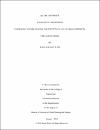Emerging Factors Shaping The Identity Of Local Urban Districts, The Case Of Doha
| Advisor | Ferwati, M. Salim |
| Author | Wadi, Rana Salman |
| Available date | 2018-12-19T11:40:57Z |
| Publication Date | 2018 |
| Abstract | Forms, Designs and symbols are components of the built environment that communicate information about the place and its identity to users. Users discern information from their environmental settings, combined with their personal interests and perceptions. The premise of this thesis states that the identity of traditional architecture undergoes two paradoxical processes dynamic transformation and resistance to changes caused by global culture and societal modern needs. Qatar is placing a great attention on the change of urban and architectural identity by the rapid wave of urban development. This thesis attempts to define contemporary architecture in Qatar, through analyzing Qatari vernacular architecture, outside effect of global factors and to what extent Qatari architecture resists the change. To test the proposed premise, this thesis prolongs into human geography using Torsten Hagerstrand’s diffusion theory. The methodology of the thesis is structured to: revision of related literature and field analysis that contains: interviews, field observations of four chosen sites and field survey. Findings, and discussion illustrate tables and diagrams, that are anticipated to show that resistance of the local identity and the acceptance of new architectural styles lead to a new semiotic presentation of Doha region. The thesis ends up with a set of recommendations for the application of aspects of Qatari vernacular architecture and urban environment, in order to strengthen the local identity while taking part of the global culture. |
| Language | en |
| Subject | Qatar vernacular architecture local identity |
| Type | Master Thesis |
| Department | Urban Planning and Design |
Files in this item
This item appears in the following Collection(s)
-
Architecture, Urban Planning and Design [38 items ]


